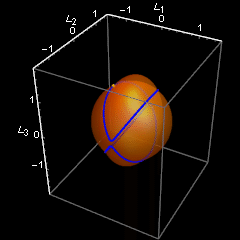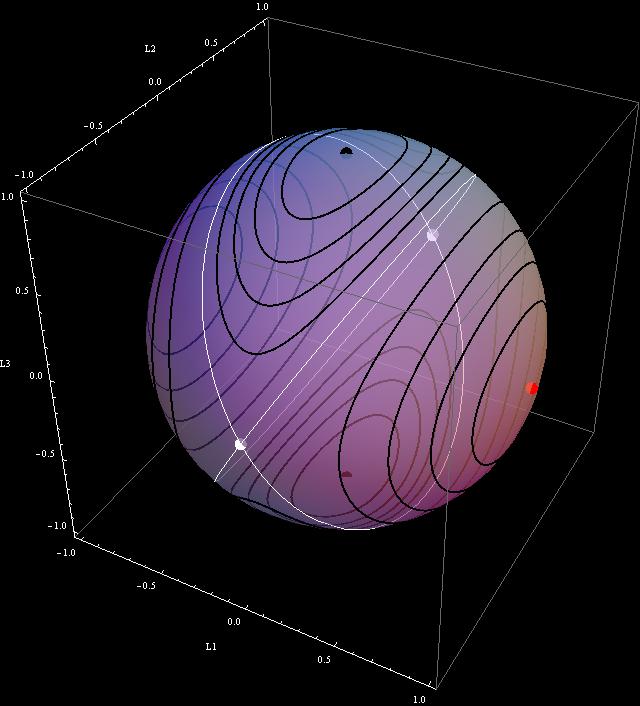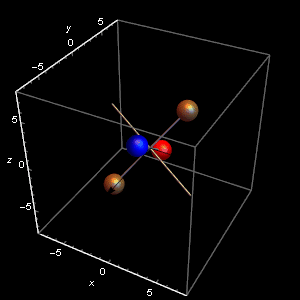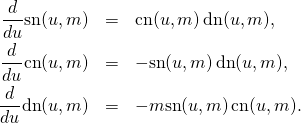From “The Crack in the Cosmic Egg: Challenging Constructs of Mind and Reality”, by Joseph Chilton Pearce (a must read!):
My neighbor was “seized and changed” somewhere in his final year of doctoral studies in topology. The structure of his mind, and his resulting world, were never again the same as that of non-mathematicians. He lived in a world of mathematical spaces. He loved to figure the spaces of knots, the kind you tie, though I could not relate his marvelous figurings to my shoelace world. He tried to show me, in beautifully-diagrammed hieroglyphics, how he could remove an egg from an intact shell through mathematical four-space. In my naive concreteness, frustrated that I had no ears to hear or eyes to see, I wanted him to apply his four-space miracle to a common hen’s egg. But my friend’s world was cerebral, his eggs those rare cosmic ones found in the inner land of thought, and his frustration at my blindness was as great as my own.
There is an eloquent madness in topology, but from that strange brotherhood’s abstractions lunar modules have been built. From their four-spaced absurdities have come real ships for spaces other than our own. The mythos leads the logos. The language of fantasy goes before the language of fact.
The physics and mathematics of asymmetric rigid top is harder than topology (see Asymmetric Spinning Top – The Hardest Concept To Grasp In Physics). It has its own egg’s tricks. A static egg has been critically analyzed in Racket about tennis racket. Then I started to move to the movies in The Flipping Top Movie that they will not show you in the movie theaters!.
“The mythos leads the logos.” But we did not yet finish with the mythos. So, let us contemplate these two animations produced by Mathematica software. Here they are:


And here is the code:
d = 0.501;
I1 = 1; I2 = 2; I3 = 3;
A1 = Sqrt[I1*(d*I3 – 1)/(I3 – I1)];
A2 = Sqrt[I2*(d*I3 – 1)/(I3 – I2)];
A3 = Sqrt[I3*(1 – d*I1)/(I3 – I1)];
B = Sqrt[(1 – d*I1)*(I3 – I2)/(I1*I2*I3)];
m = ((d*I3 – 1)*(I2 – I1))/((1 – d*I1)*(I3 – I2))
m1[t_] = A1*JacobiCN[B*t, m];
m2[t_] = A2*JacobiSN[B*t, m];
m3[t_] = A3*JacobiDN[B*t, m];
If[m < 1, tf = N[4*EllipticK[m]/B],
tf = N[4*EllipticK[1/m]/(B*Sqrt[m])]];
g = x^2 + y^2 + z^2 – 1;
h = x^2/I1 + y^2/I2 + z^2/I3 – d;
cp = ContourPlot3D[{h == 0, g == 0}, {x, -1.5, 1.5}, {y, -1.5,
1.5}, {z, -1.8, 1.8},
MeshFunctions -> {Function[{x, y, z, f}, h – g]},
MeshStyle -> {{Thick, Blue}}, Mesh -> {{0}},
ContourStyle ->
Directive[Orange, Opacity[0.5], Specularity[White, 30]],
PlotPoints -> 40, BoxRatios -> Automatic, Background -> Black,
Axes -> True,
AxesLabel -> {“\!\(\*SubscriptBox[\(L\), \(1\)]\)”,
“\!\(\*SubscriptBox[\(L\), \(2\)]\)”,
“\!\(\*SubscriptBox[\(L\), \(3\)]\)”}, AxesStyle -> White]
plot2b = Table[
Show[{cp,
Graphics3D[{Yellow,Sphere[{m1[a], m2[a], m3[a]}, 0.05]}]}], {a, -tf/2,
tf/2 – tf/10, tf/20}];
Export[“C:/egg0501.gif”, plot2b,
AnimationRepetitions -> Infinity, ImageSize -> {240, 240}]
For the first animation the parameter $d$ is set to $d=0.499.$ What do we see? How is what we see in the animations related to the code? At the beginning of the code we see $I1 = 1; I2 = 2; I3 = 3;$ These are the characteristics of my olympic champion flipping and making vaults top. Girls do it their way
My rigid body does it even better. My rigid body has as its principal moments of inertia the first three prime numbers!. You can’t beat it! Of course there will be people that will attempt to discredit it, like: “Ït is using doping.” Which is not true at all! Or: “Number 1 is not a prime number”. They do not know history of mathematics. Read here from Wolfram MathWorld, Prime Number: “The number 1 is a special case which is considered neither prime nor composite (Wells 1986, p. 31). Although the number 1 used to be considered a prime (Goldbach 1742; Lehmer 1909, 1914; Hardy and Wright 1979, p. 11; Gardner 1984, pp. 86-87; Sloane and Plouffe 1995, p. 33; Hardy 1999, p. 46)…”. It is clear that it is the primest of all primes!
So, my spinning rigid body wins all competitions. Let me recall it explicitly from the previous post:
Now let us see these moments of inertia in a spectacular action of freely rotating in space. Not just rotating! Rotating and then flipping.
Click on the image to open the animation in a new window. Depending on your connection it may take a while. The size is almost 1 MB. You will see the flips. But why? What causes these flips?
The code above provides explicit solutions for the Euler’s equations for this champion. Look at the first animation. You see a white moving point. It moves along a curve in the northern hemisphere. It belongs to the family curves discussed in The Flipping Top Movie that they will not show you in the movie theaters!

Except that the path on the animation is more elongated than on the image above. But why the northern hemisphere? Why not the southern one? It looks like racial discrimination!
Or the second animation. The yellow point moves only on path on the right. Not on the left. Why should leftist movements be neglected?
These are valid questions. Perhaps the Readers will try to answer them?
* Right now I am aware of the fact that this blog has two active readers.












